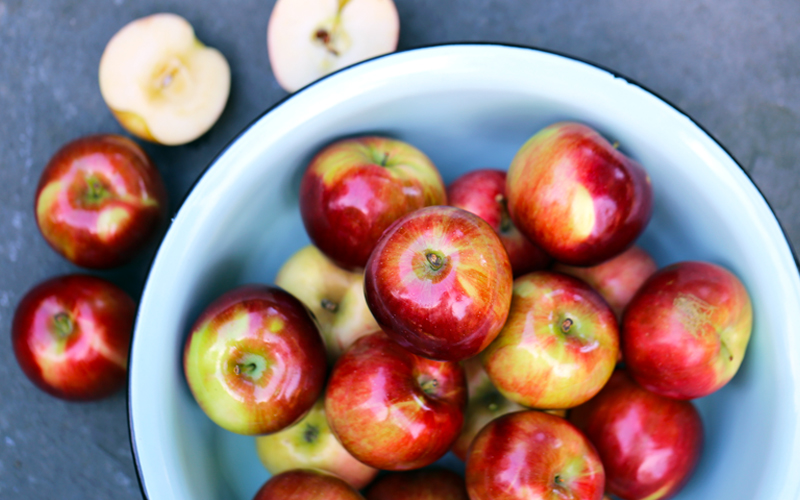

Apple picking season is already coming to a close. If you had a chance to make it out into the fields, and you were relatively successful, you likely have a a big basket of leftover apples. Johnny Appleseed would be so proud, probably.
But the shelf life of those apples is closing in on you, and you can only make so many apple pies. Luckily there’s another, boozier, option: Hard apple cider.
“One of the biggest misconceptions is that you have to use cider varieties to get good cider,” Albert Wilklow, a sixth-generation apple farmer and cofounder of Bad Seed Cider, told VinePair. “There are plenty of culinary apples out there that make great cider.”
Don’t run to the grocery store for some everyday apples just yet, though. Wilklow isn’t talking about using brands like Red Delicious or Granny Smith. He’s talking table apple varieties like Empire and Winesap, which you can find at a well-stocked farmers market but are better straight from the farm.
Wilklow knows what he’s talking about. He’s been working with cider professionally for five years and has been making cider on the side since he was in high school some 15 years ago.
“People assume you have to use older, European variety apples or older varieties that aren’t good for eating,” Wilklow said. It’s a misconception the everyday apple picker can disregard with glee.
Jason Grizzanti, cofounder of Warwick Valley Winery and Distillery (as well as Black Dirt Distillery), predominately uses dessert apples (non-cider apples) in his ciders.
“Cider fruit provides a different flavor that not everyone is accustomed to,” Grizzanti told VinePair. “It’s more tannic, a little more bitter notes, less of what I would call an ‘apple’ flavor. Dessert fruit provides more of that apple note that people expect when they hear something is apple.”
Girzzanti, who has been making cider, wine and spirits for 24 years, blends apple varieties like Winesap, Empire and Gold Rush for more complexity.
As for those cider-specific apples, well, they had a time and place.
“A lot of the older cider varieties, they were cider varieties because they were not very good for eating,” Wilklow said. “A lot of them are bitter when you bite into them, they don’t store as long and get soft faster.”
In the past (and cider has a long past going back at least to Roman times), cider was safer to drink than water and was regularly consumed. George Washington and Thomas Jefferson made cider with apples from their farms, and John Adams allegedly downed a tankard of cider with breakfast, Angry Orchard writes in its cider history.
Traditional cider apples were the norm back in the day — John Chapman, aka Johnny Appleseed, spread the cider apple love from the East Coast to the Midwest. Cider apple trees flourished throughout the 1800s until beer production started to ramp up with the influx of beer-loving German and Eastern European immigrants. Then Prohibition came along and dealt the death blow. Cider orchards were leveled and sweeter table varieties took their place.
It wasn’t until the mid 2000s that cider started to make a noticeable comeback (although, after 10 years of explosive growth, cider sales are finally starting to level out). The welcoming market allowed cider brewers to experiment with more types of apples to create cider that is dry, sweet, and every level in between.
Which brings us to the present. Apple picking is a legitimate early fall pastime, and people can even pick and take home the same apples that brewers use in their ciders. As an added bonus, the newer varieties have heavier, more consistent produce. That means those leftover apples you picked don’t have to wallow and deteriorate into a squishy mass of fruit flies.
Each apple variety offers different sugar content (therefore different alcohol levels when made into cider), tannin levels and flavors, just as different wine grapes produce a wide variety of flavors and styles. Grizzanti suggests sticking to varieties that ripen at the end of the season because early ripening varieties have low sugar and acid levels that leads to “bland, insipid ciders.”
So get to crushing and fermenting, because there are so many varieties to try. Johnny Appleseed would be oh so proud, probably.
